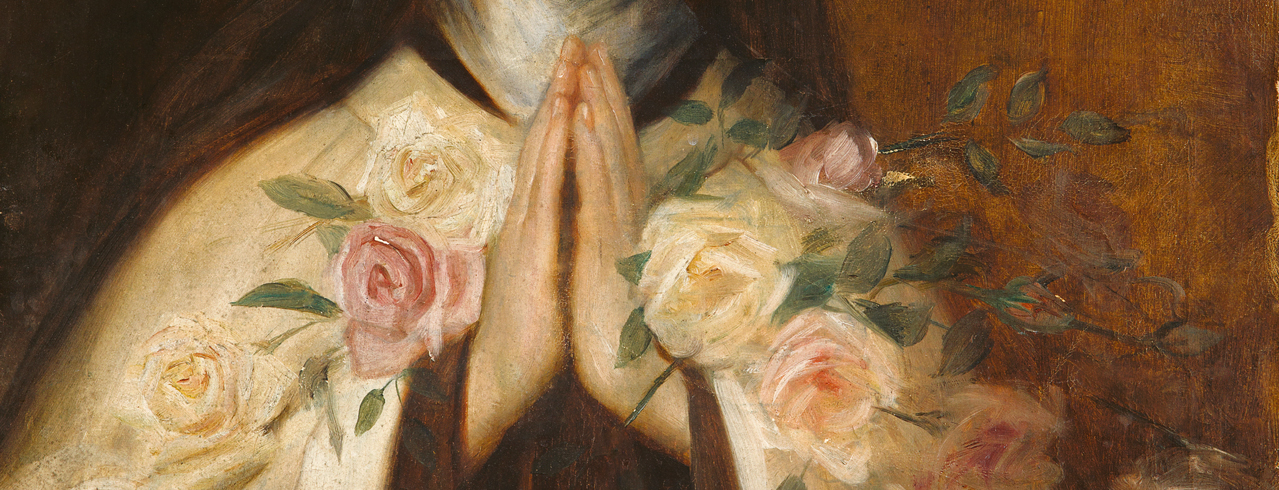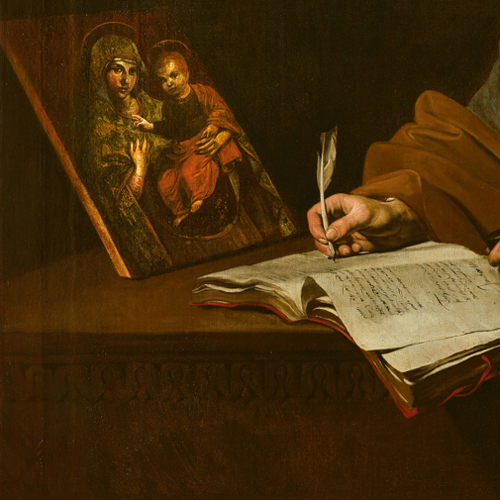The cover of the month
A Soul That Speaks to Our Soul by Pierre-Marie Dumont
An exact contemporary of Claude Monet (1840–1926) and the impressionists, Ferdinand Roybet (1840–1920) was, in those days, the leading master of historical painting. He was famous in France, and even more so in the United States, where his works commanded the highest prices. They can be found in the Metropolitan Museum in New York, in the Musée d’Orsay in Paris, but especially in the Roybet-Fould Museum in Courbevoie, which is dedicated to them.
After the death of Saint Thérèse of Lisieux on 30 September 1897, Mother Agnes of Jesus (Pauline Martin), having been reelected several times as prioress of the Carmel in Lisieux, took an active interest in the beatification of her younger sister. Since this prospect was becoming more certain each day, she commissioned “the most famous artist in France”, Ferdinand Roybet, to paint a portrait of “Blessed Thérèse”. The Baroness Gérard assisted with this project and offered to cover the expenses. According to Céline Martin, who was also associated with this undertaking, it cost “only” 10,000 francs. The painter’s assignment was to take as his model, as much as possible, Thérèse with Angels, which had been painted by Céline in 1913. The work was completed in 1917. Now it is displayed in the large sacristy of the Basilica Shrine in Lisieux.
Before starting to work, the painter no doubt submitted several sketches to his patrons. The painting that adorns the cover of this issue of Magnificat is probably one of these sketches. We can assume that it was not accepted, since the final work displays a figure of Thérèse that is a graphically improved copy of the Thérèse with Angels by Céline. Alas, although Céline’s work in its naïveté is not without charm, the copy of it, executed with sophistication, loses all its interest, especially when surrounded by pompous scenery that does anything but suggest the “little way”.
On the other hand, as you can see, the artist’s sketch is inspired by his free vision of the subject, which is manifested in a composition that is not only simple and beautiful but also very touching emotionally and spiritually. The face, the glance, the folded hands, the roses—everything is alive in this painting; everything enables us to contemplate the soul of the Little Flower as she speaks to our soul in her manuscripts. To mirror the beauty of such a soul, the artist managed to achieve a high artistic standard, and to do this while substantially complying with the specifications, which were to express the naïve, fervent vision that only a blood sister and a sister in religion could have of her dear little sister.
“I want to make Love loved.”
A few months before her death, Thérèse shared her meditation on the new commandment of Jesus, “his own commandment”, she insists: “Jesus no longer speaks about loving our neighbour as ourselves, but rather of loving our neighbour as he, Jesus, loved him, as he will love him until the end of the ages. Ah, Lord!... You gave a new commandment because you wanted to grant this grace to me…. Oh, may I love it [this commandment], since it gives me the assurance that your will is to love in me those whom you command me to love!”
What marvellous good news Thérèse gives us! We should repeat it to ourselves every day with our morning prayers, as the program for our day. Through his commandment of love, Jesus entrusts to us nothing less than the completion of his work through the ages, until he comes again, so that now with us in him, and him in us, our lives might be a living eucharist [thanksgiving] to the glory of God the Father.
The little way of Thérèse is the safest path to follow, so that the love of God might reach its perfection in our lives. “To love is to give everything and to give oneself,” she tells us. There is no better way of saying what we must do in order to put into practice the phrase “as I have loved you” in the new commandment.
Pierre-Marie Dumont
Saint Thérèse of Lisieux, Ferdinand Roybet (attributed to, 1840–1920), private collection. © Photo Clément Guillaume.







